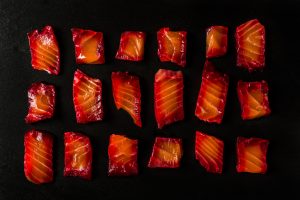For better or worse, booze has historically been laced throughout the professional kitchen. Cooks have always done well to befriend the bar staff and front of house, but the use of alcohol in the kitchen runs much deeper, and there’s more to this enquiry than a few sozzled chefs.
Sauces are enriched, pans deglazed and bisques made infinitely more complex, but for the most part, the alcohol is cooked off, leaving an intensity of flavour behind. Wine has been the go-to for centuries and leaves a richness, roundness and increased depth of flavour in its wake. The rise and dominance of the French brigade system and classical French cooking is absolutely riddled with wine and cognac in everything from sauces, starters, mains and desserts.
The fortified wines of southern Spain have also proved a tangible ingredient and became quite a fascination in 19th Century British cooking. The humble mince pie filling traditionally called for ‘sack’, which is an old word for what we commonly refer to as sherry. See Hannah Glasse for one of the oldest mince pie recipes on record. The conscientious tapas bars of today are using less non-descript sherry, and tinkering with the uses of PX, Palo Cortado, and Olorosso sherries, using them to flambé chorizos and choice cuts of Iberico pork such as pluma. However, we shouldn’t overlook its notorious use in the British trifle – a dish that is long overdue a resurgence.
Sherry’s close sibling Port is another fortified wine, and like Madeira, has traditionally been used in the cooking processes of duck and game, but also creates a crescendo to a meal propping up boozy puddings and well balanced cheese boards.
As we look at lower ABVs, we venture into the realms of pie fillings, steak and ale to be specific. This workingman’s British staple is unquestionably one of the finest marriages of food and alcohol. From well-rounded golden ales, to porters and stouts, beef seems to work perfectly with our countries most famous ferment. Cider has a similar role to play too, the pros choice for stewing pork, but also less obviously, with eel.
With gin’s skyrocketing popularity it’s no wonder that it has begun seeping into kitchens in a culinary way. The lofty notes of juniper, coriander and other botanicals gives it a rightful place alongside venison and the alcohol can work to help tenderize tougher, leaner cuts. However, it’s in the curing of salmon that gin appears to be finding its feet. Used alongside beetroot, which lends an earthiness to the pink fleshed fish, small amounts of gin can bring a contrasting freshness and collaborate with a heavy hit of black pepper to arm chefs with a complex, very grown up cured salmon.
The duo of booze and food is almost inescapable, with carefully selected food and drink pairings now going well beyond the choice of red or white wine. Today you’re as likely to be upselling a craft cocktail alongside a beef wellington, as you are a shot of rum with your Jamaican ginger cake. However, as we continue to explore and exploit flavour, extracting it from everywhere and anywhere we can, we would do well to continue to look at booze as a gateway. The nuances from barrel aging, fortifying, and fermenting can yield truly interesting results, and for the serious chef, this is gold.


